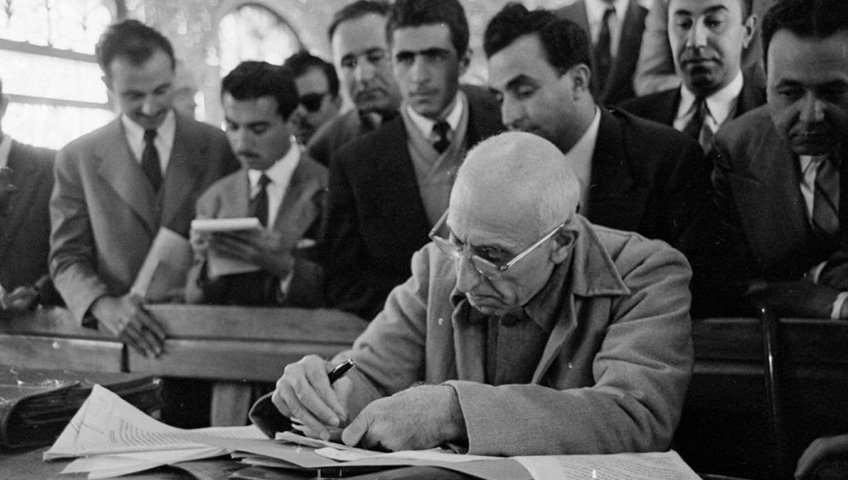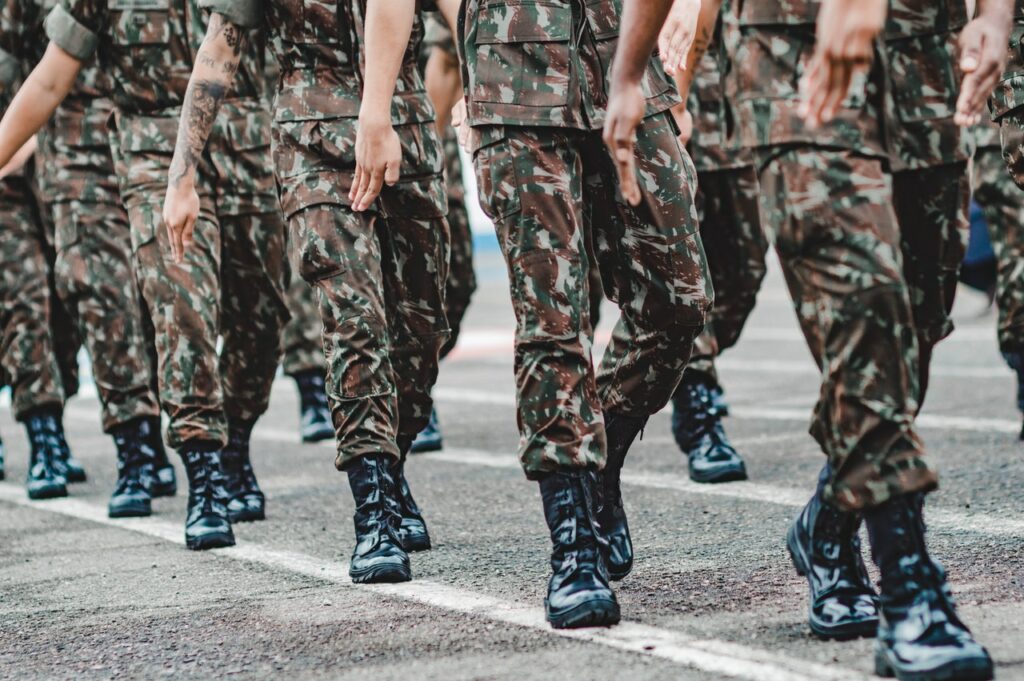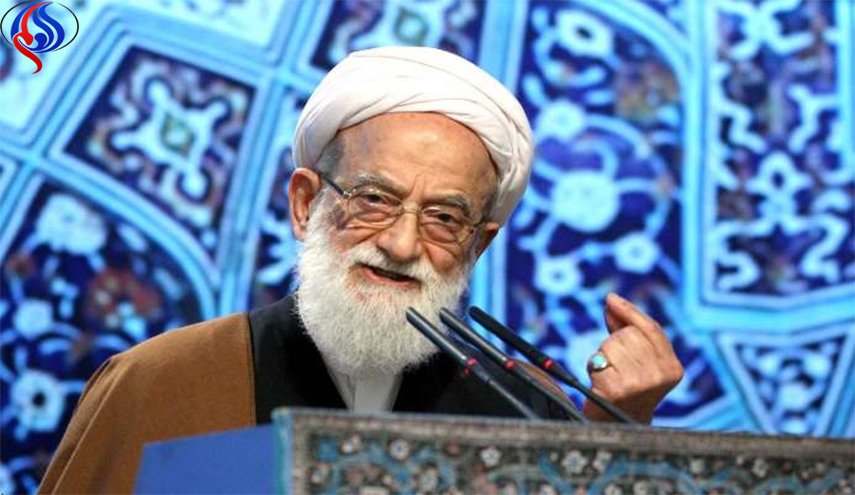Years have passed since the overthrown of the Iranian Prime Minister Mohammad Mossadegh in 1953. Yet, Mossadegh’s name remains engraved in the minds of the young and old generation. The 1953 coup is an extremely immense topic with numerous groupings involved and requires in-depth attention in order to be able to righteously clarify the events that took place. Because of the broadness of the chosen subject, this essay will try to narrow down on two groups and thus mainly concentrate on the “Fadyan-e Islam” or also in English referred to as the “Devotees of Islam” and their active role in the overthrow of Mossadegh’s government, which is now referred to as the Iranian 1953 Coup d’état. In order to understand the political landscape of Iran in 1953, there needs to be a brief summary of the political dichotomy prior to the coup.

Thus, this essay will firstly look at Iran prior to the overthrow of Mossadegh and the role of Fadayan-e Islam. Next, Fadayan-e Islam’s ideology and the rise of their opposition towards Mossadegh will be explained in further detail. Finally, different arguments will be given on why the Fadayan-e Islam were one of the main reasons and supporters of the coup and some counter arguments will be taken in consideration and explored. This essay will refer to academic articles written by acclaimed researchers and will consider leaked documents by the CIA to sketch an as much as possible truthful image of the occurred events.
With the discovery of oil in the Iranian soil, in the beginning of the 20th century, foreign interests, especially Britain’s increased. This discovery led to the creation of the Anglo-Persian Oil Company and strengthened the bonds of Iran with the Western World. The establishment of new relationships created the beginning of an era of modernization and change. Faghfoory, researcher at International Society of Iranian Studies argues that “The process of modernization in Iran was accompanied by a considerable degree of change in social stratification. New social classes and occupational groups emerged and the power of the old and traditional elites declined.” This decline and change of power dynamics created an uproar amongst many, especially amongst the Ulamas (religious leaders). The Ulamas believed that the process of modernization was against their Islamic values and would destroy the societal values of the country. Another group who also criticized the government was Mossadegh’s small opposition party in the parliament, the National Front. This political group believed that Iran’s natural resources should be controlled by the Iranians and not by the British. This created a tension between the Shah and Mossadegh. The Ulamas, of whom some were members of the Fadayan-e Eslam and Mossadegh had started to find a common ground. Both were against the foreign intervention in Iran.

“After Reza Shah’s downfall, religious leaders actively sought to regain their former power and influence, and almost immediately all religious practices prohibited under him returned.” Many Iranians started to support these religious groups who spoke out and demonstrated massively against the new Shah. Fadayan-e Eslam assassinated many reformers of whom some were ministers at the time. At first, Fadayan-e Eslam and Mossadegh seemed to understand each other’s nationalistic political strivings, but with time and after the assassinations it soon became clear that their paths could not cross. Mossadegh received support from many secular groups such as the Tudeh Party which contravened with the beliefs of the Fadayan- e Islam. Soon Mossadegh became the next target on the assassination list of the Fadayan- e Eslam.
Fadayan-e Islam was mainly composed out uneducated, extreme religious people of the lower class of a very young age. Though they received some support from wealthy merchants and students, the nucleus of the group consisted out of a small religious fanatic men who strived to change the social and economic situation of the country. Their leader was a young cleric called Navvab Safavi. In his view Islam was the most unique way of life and he was convinced that Islam alone could answer to all the questions about how to live.
This is how the group started to differentiate itself from all the other groups. The Fadayan-e Islam opposed any politicians, especially those of the ruling Shah and tried to assassinate and overthrow the system. They were convinced that sovereignty belonged only to God. With the rise of Mossadegh’s party and his increasing support by the Iranians, his party, the National Front became the next target of the Fadayan-e Islam. Mossadegh’s stance on secularization created a greater tension. As the Fadayan- e Islam believed that secularization would threaten the traditional Islamic values and believed that this ideology was the result of Western-influence.
By 1951, Mossadegh’s National Front had won the majority seats of the parliament. During this period Mossadegh worked closely with one of the close allies of the Fadayan- e Islam, Ayatollah Kashani. Mossadegh believed that Kashani could mobilize the religious people and win their support for his party and his oil nationalization plans. After a several years of close cooperation the relationship between Mossadegh and Kashani decreased. Mossadegh realized that the Fadayan-e Islam are causing political instability in the country. Mossadegh as a secular did not want to create an Islamic state and was against the violent behaviour of Kashani’s mobs.

In 1953 the situation become more instable. Mossadegh had lost one of his most powerful allies. Ayatullah Kashani who criticized Mossadegh more often because of his secular views reduced his support for Mossadegh’s plans to a great extent. Fadayan-E Islam’s most powerful opponent at that time remained Mossadegh. In order for them to be able to execute their Islamic government plans, they had to get rid of Mossadegh’s government. Many argue that without the active and secret actions of the Fadayan-E Islam, the government of Mossadegh had never been able to be overthrown. Other claim that the coup was an organized operation known as Operation AJAX conducted by the CIA and the British Intelligence Services. Yet, when looking at Iran from the inside, one things is clear: the internal instability of the country created unrest. This unrest resulted in many government changes and power shifts. Though the external factors such as the British and American intervention played a big role in overthrowing Mossadegh, this could never have been done without the political divisions in the country. The powerful and increased role of the Fadayan-e Islam can be seen as one of the main reasons behind the Iranian 1953 Coup d’état.
Looking back at documentations, there is a visible power shift and internal instability pattern. Yet at that period in history, all seemed more unclear and unorganized. Now after all the leaked documents, researchers and governments are still not hundred present sure about the main power behind the coup. There are many different stances and perspectives about how the coup was arranged and by whom. One thing is for sure; the Iranian 1953 Coup d’état changed the course of the Iranian history and influenced the twenty years later Iranian revolution in 1979 where the Shah was overthrown and an Islamic government was established. This establishment of an Islamic government was exactly what the Fadayan-e Islam fought and strived for. Now after more than sixty years, the secular ideas of Mossadegh and his government have no place in the Iranian society and have been replaced by the ideologies of people like Navvab Safavi and Ayatullah Kashani.
Sources:
Wolfgang, Kurt Kressin. Prime Minister Mossadegh and Ayatullah Kashani from Unity to Enmity: As Viewed from the American Embassy in Tehran (Texas: University of Texas at Austin, 1991)
National Security Archive of George Washington University. “CIA Confirms Role in 1953 Iran Coup Documents Provide New Details on Mosaddeq Overthrow and Its Aftermath” Last modified August 19, 2013. http://nsarchive.gwu.edu/NSAEBB/NSAEBB435/
Ferdows, Adele. Religion In Iranian Nationalism: The Study of the Fadayan-i Islam (Indiana: Indiana University, 1967)
Faghfoory, Mohammad H. The Impact of Modernization on the Ulama in Iran, 1925-1941 (Taylor & Francis, Ltd. 1993) P. 277.
Ahmad Kasravi, Haj Ali Razmara, Hassan Ali Mansour and many more were assassinated by members of the Fadayan-e Eslam.